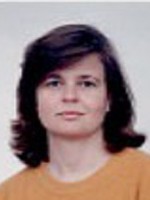abstract
Ion exchange resins have many industrial applications, namely as sorbents and catalysts. In solid-catalyzed reactions, intraparticle reaction-diffusion competition is generally described by effectiveness factors calculated numerically or analytically in the case of isothermal particles and simple rate laws. Although robust, numerical calculations can be time-consuming, and convergence is not always guaranteed and lacks the flexibility of user-friendly equations. In this work, analytical equations for effectiveness factors of reversible reactions derived from the general scheme A + B reversible arrow C + D are developed and numerically validated. These effectiveness factors are analytically expressed in terms of an irreversible nth order Thiele modulus (specifically written for the nth order forward reaction), the thermodynamic equilibrium constant, the ratios of effective diffusivities, and the ratios of surface concentrations. The application of such analytical equations is illustrated for two liquid phase reactions catalyzed by Amberlyst-15, specifically the synthesis of ethyl acetate and acetaldehyde dimethyl acetal. For both reactions, the prediction of the concentration profiles in isothermal batch reactors achieved errors between 1.13% and 3.38% for six distinct experimental conditions. Finally, the impact of non-ideal behavior upon the multicomponent effective diffusivities, subsequently conveyed to the effectiveness factors, is enlightened.
keywords
ION-EXCHANGE-RESINS; CATALYTIC-ACTIVITY; POROUS CATALYSTS; AMBERLYST 15; DIFFUSION; KINETICS; ESTERIFICATION; SIZE
subject category
Chemistry
authors
Rios, WQ; Antunes, B; Rodrigues, AE; Portugal, I; Silva, CM
our authors
Groups
G4 - Renewable Materials and Circular Economy
G6 - Virtual Materials and Artificial Intelligence
Projects
CICECO - Aveiro Institute of Materials (UIDB/50011/2020)
CICECO - Aveiro Institute of Materials (UIDP/50011/2020)
Associated Laboratory CICECO-Aveiro Institute of Materials (LA/P/0006/2020)
acknowledgements
This work is financed by Portugal 2020 through European Regional Development Fund (ERDF) in the frame of the Operational Competitiveness and Internationalization Programme (POCI) in the scope of the project CICECO-Aveiro Institute of Materials, UIDB/50011/2020 & UIDP/50011/2020 & LA/P/0006/2020, financed by national funds through the FCT/MEC (PIDDAC). This work was financially supported by LA/P/0045/2020 (ALiCE), UIDB/50020/2020 and UIDP/50020/2020 (LSRE-LCM), funded by national funds through FCT/MCTES (PIDDAC).





